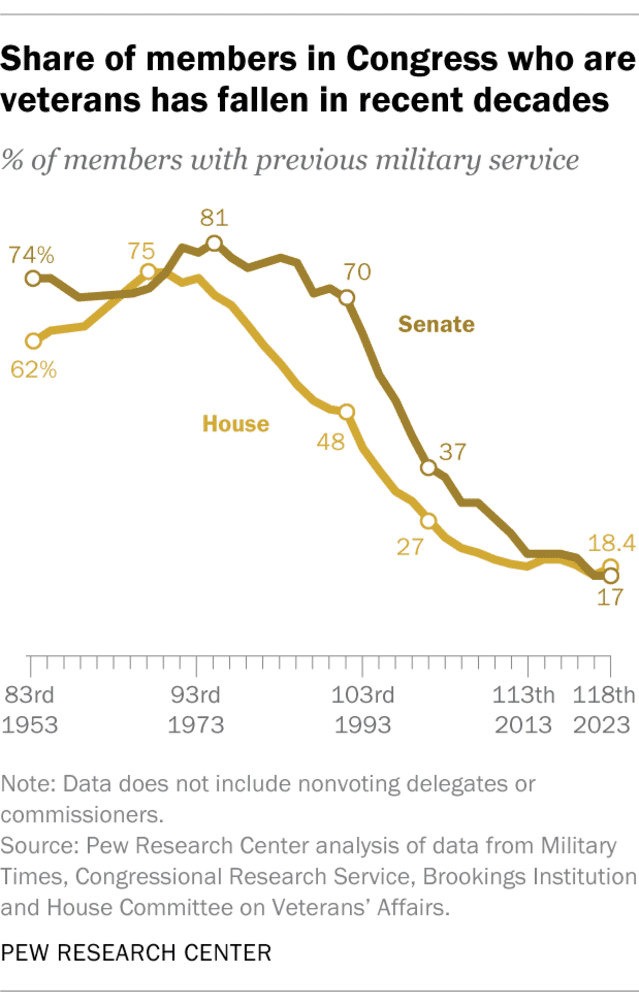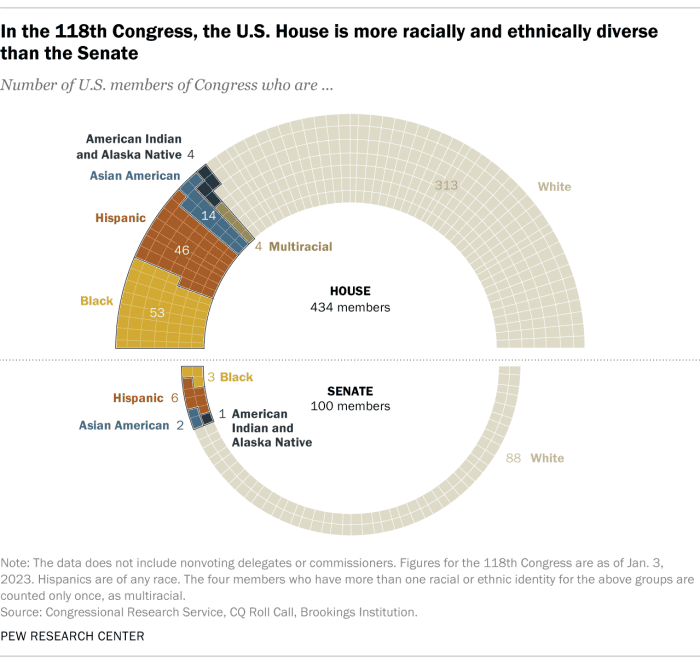This post was originally published on this site
Advocates for stemming a recent decline in military veterans serving as U.S. lawmakers are seeing only a little progress in the new Congress, while those seeking other types of representation on Capitol Hill can point to fresh records.
The U.S. House of Representatives now has 80 members, or 18% of the chamber’s membership, who served in the military, according to the Pew Research Center. That’s up from 75 veterans, or 17% of House lawmakers, in the Congress that wrapped up last year.
Meanwhile, the number of veterans in the U.S. Senate has stayed at 17, as the arrival of Republican Sen. J.D. Vance of Ohio, a former Marine, offset the retirement of GOP Sen. Jim Inhofe of Oklahoma, who served in the Army, Pew found.
In the 1950s, ’60s and ’70s, veterans made up well above 50% of the House and Senate, as shown in the chart below. Even with the share of veterans in Congress staying near a record low for modern times in 2023, it still exceeds the percent of the overall U.S. population with a military background, as only an estimated 6% or 7% of American adults are veterans.

Pew Research Center
One bipartisan organization that aims to elect more veterans to Congress is the With Honor Fund, a super PAC that received $10 million from Amazon
AMZN,
founder Jeff Bezos in 2018. Supporters of this independent political action committee have argued that “one solution to the partisan crisis in national security policy is to elect to Congress more veterans committed to bipartisanship.”
Separately, women make up 28% of the 118th Congress, marking a new high, according to a different Pew analysis.
That’s an increase of nearly 60% from a decade ago, but still well below women’s share of the overall U.S. population, which is estimated to be 50.5%.
In addition, Pew has found that 25% of members of the new Congress identify their race or ethnicity as something other than non-Hispanic white, making the 118th Congress the most racially and ethnically diverse to date. In the 434-member House, 28% of lawmakers identify as something other than non-Hispanic white, while the corresponding share in the 100-seat Senate is 12%.
Representation of Black Americans, American Indians and Alaska Natives in the House is now on par with their shares of the total U.S. population, according to Pew’s analysis. But the 11% share of Hispanic representatives in the House remains below that ethnicity’s share of the population, 19%.
Overall, 75% of members of Congress are non-Hispanic white, higher than the 59% share in the total U.S. population.

Pew Research Center
Now read: Fight over House speaker job offers ‘ominous portent of how the U.S. debt-ceiling fight will go’


